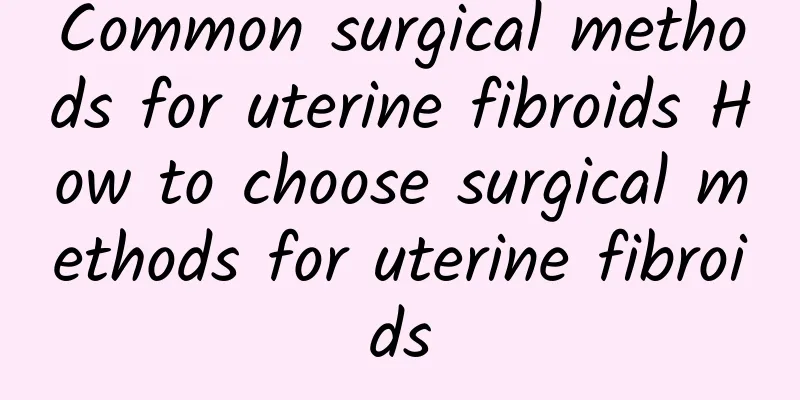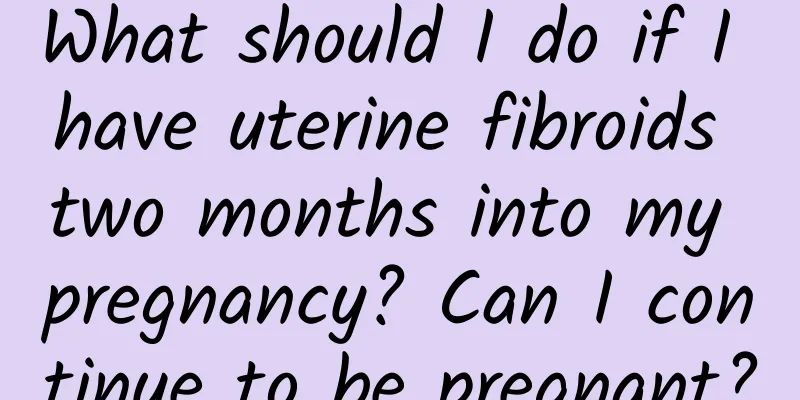Common surgical methods for uterine fibroids How to choose surgical methods for uterine fibroids

|
Regardless of the surgical method (laparotomy, laparoscopy or negative surgery), there are two types of uterine fibroid surgery, one is to remove the uterine fibroids, and the other is to remove the hysterectomy. The two surgeries have different indications. The uterus has two functions, one is to give birth to children, and the other is menstruation. The uterus has nothing to do with human aging. Estrogen and progesterone in the body are secreted by the ovaries. Which surgical method to choose mainly depends on the patient's age and fertility requirements. How to choose the surgical method for uterine fibroids? For young women who want to have children, myomectomy is generally used, while for patients who are close to menopause and have no fertility requirements, hysterectomy should generally be chosen. In the outpatient clinic, many patients who are close to menopause strongly request to keep the uterus. Although it is technically possible, as a doctor, it is generally not recommended that patients undergo such operations at the risk of recurrence and difficulty in secondary surgery. If these patients are willing to try new focused ultrasound treatment or arterial embolization treatment, it can be considered, but any surgery to preserve the uterus faces the risk of recurrence. According to statistics from Peking Union Medical College Hospital, the 5-year recurrence rate after single myomectomy is 15%, and the 5-year recurrence rate for multiple myomas is 30%. Are there any special precautions after surgery? After myomectomy, it takes a certain time interval to get pregnant again. The specific time should be determined according to the situation of the operation. If the fibroids are not large and the location is not deep, the contraceptive time may be shorter, but if the fibroids are large and deep, the contraceptive time is longer. In addition, there is a scar on the uterus after myomectomy, and there is a risk of uterine rupture when pregnant again. Although it is not large, it is still worth being vigilant. After pregnancy, we should explain this situation to the obstetrician. Once abdominal pain is found during pregnancy, go to the hospital in time. There is no special emphasis on diet after surgery. At present, the cause of uterine fibroids is still unclear and there is no way to prevent the recurrence of fibroids. Is malignant change possible? Uterine fibroids are unlikely to undergo malignant changes, with a probability of about 0.5%. Symptoms that may alert you to malignant changes in fibroids include: ① a significant increase in fibroids in recent times; ② ultrasound suggests abundant blood flow; ③ elevated blood LDH. Is there any way to prevent uterine fibroids? So far, there is no way to prevent or treat uterine fibroids. Some drugs, such as GnRH-a gestrinone, can reduce uterine fibroids before surgery, which is beneficial for surgery, but they will increase after stopping the drug. Therefore, conventional treatment is not recommended. At present, there are many traditional Chinese medicines on the market that claim to treat uterine fibroids, but there is no clear evidence. |
<<: How much does it cost to do uterine fibroid surgery?
>>: Dietary care after uterine fibroid surgery What to eat after uterine fibroid surgery
Recommend
What are the signs of miscarriage?
Pregnancy often makes many expectant mothers exci...
What Chinese medicine can be used to treat premature ovarian failure
What Chinese medicine can be used to treat premat...
Which hospital is reliable for abortion?
Nowadays, many women choose to end their pregnanc...
What are the causes of second degree cervical erosion?
The occurrence of second-degree cervical erosion ...
Humid weather can cause vaginitis to recur
Humid weather makes vaginitis more likely to recu...
Vulvar leukoplakia is a gynecological disease
Many people panic and don't know what to do a...
What is the cause of female infertility after abortion? There are two main causes of female infertility after abortion.
Infertility after artificial abortion accounts fo...
Can I use salt to wash my vaginal opening for itching? No
Generally speaking, you cannot use salt to clean ...
Obese men may have less semen, lower semen quality and may become infertile! Dr. Liu Boen: 3 tips for obese men to lose weight
Due to the impact of the declining birth rate, th...
What are the symptoms of threatened miscarriage during pregnancy
As time goes by, the belly of a pregnant woman wi...
Professional knowledge on the hazards of abortion
In ancient times, if a woman had a miscarriage, s...
What to do if bacterial vaginosis keeps recurring
What should I do if bacterial vaginosis keeps rec...
8 signs you're going through menopause
Menopause is an important stage in a woman's ...
Can pelvic inflammatory disease cause infertility? How to prevent and treat it in daily life
How to prevent pelvic inflammatory disease? Can p...
Genes are the main cause of ovarian cysts
Ovarian cysts bring a lot of unspeakable pain to ...









